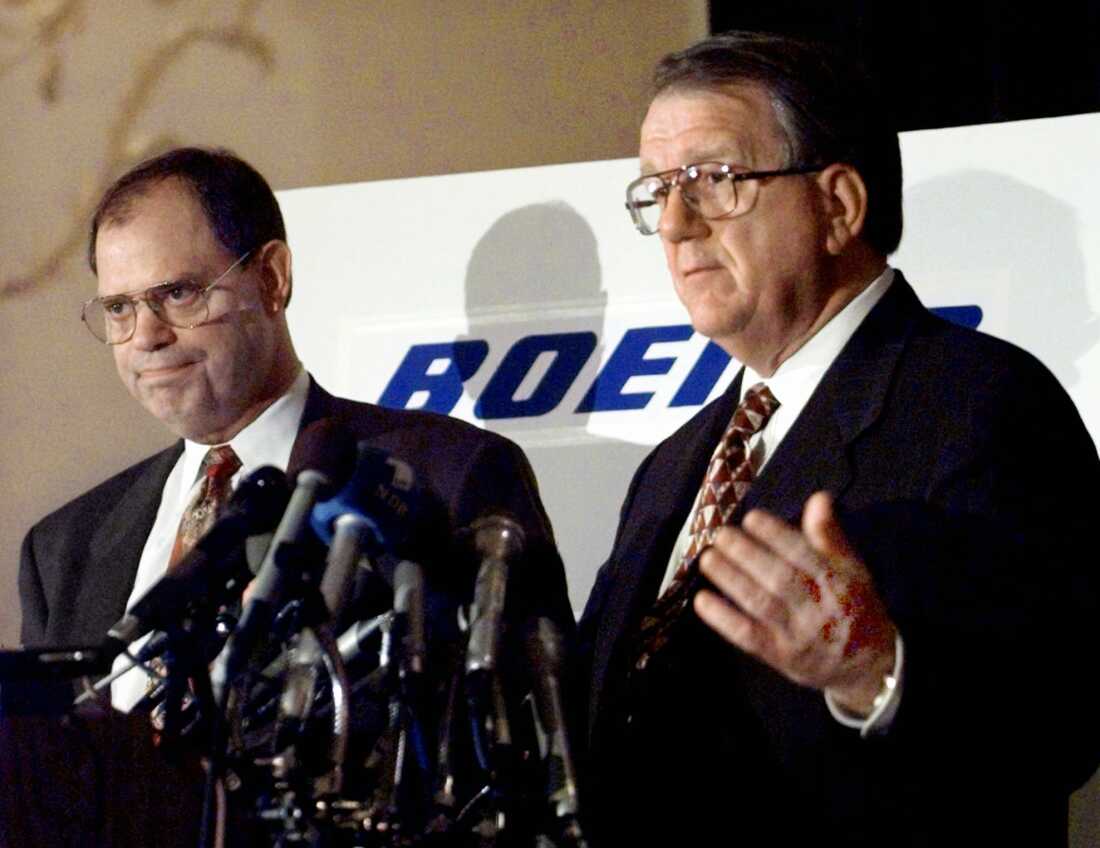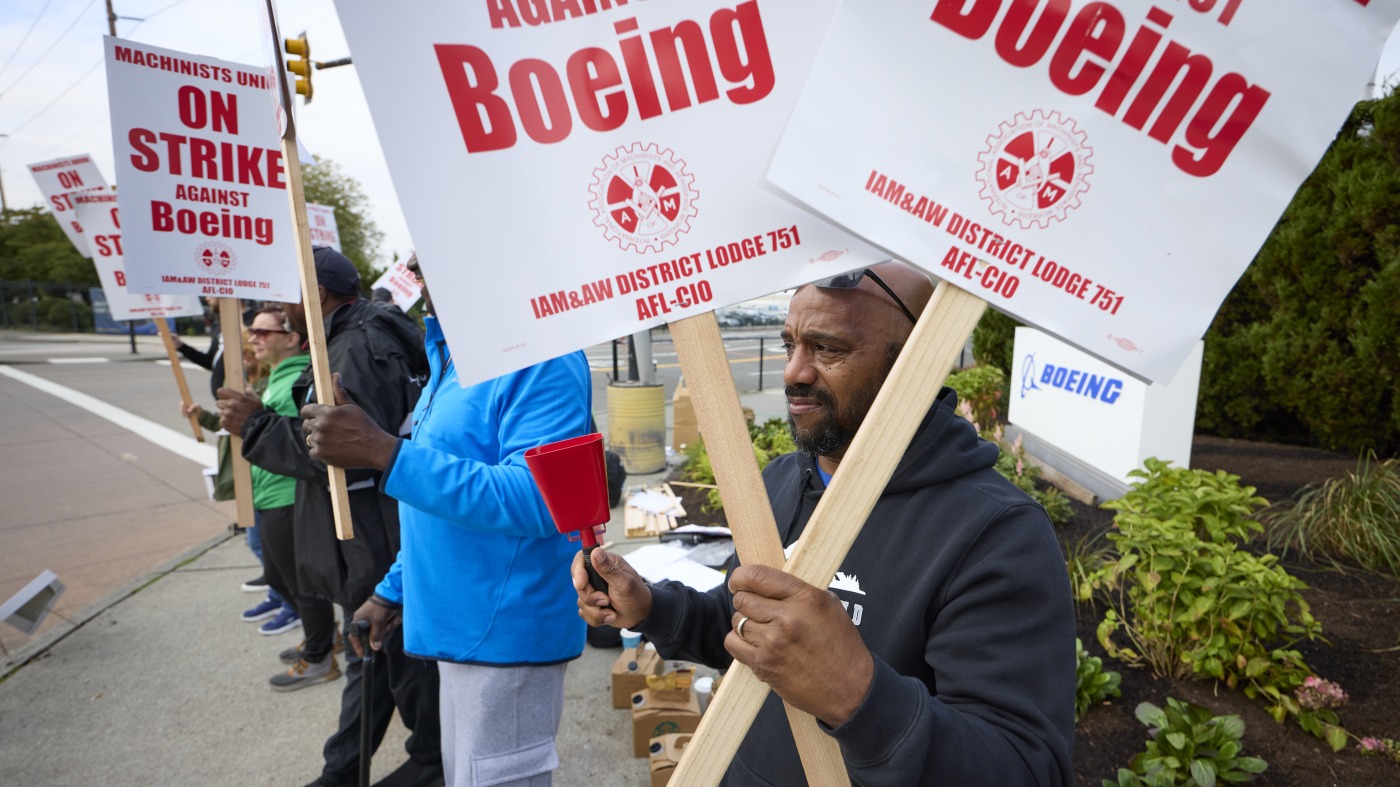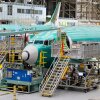Boeing workers hold signs on the picket line at the Renton assembly plant on Friday in Renton, Wash.
John Froschauer/AP
hide caption
toggle caption
John Froschauer/AP
Last week, an overwhelming majority of Boeing’s some 33,000 members of the machinist union — 94.6% to be exact — rejected the company’s tentative contract and even more — 96% — voted to walk off the job.
The stunning tally came even after it was called “the best contract we’ve negotiated” by Jon Holden, the president of the machinist union, IAM District 751.
But some saw the Boeing strike coming from a mile away.
On the surface, the strike is about negotiating a better deal. For instance, the union initially asked for a wage increase of more than 40% over three years — far greater than Boeing’s final offer of a 25% raise spread over four years.
But the strike also stems from years of built-up frustrations, industry observers say. Some trace it back to 2014 when the company reopened the previous contract and forced the union to accept health and pension benefits. Others say the strain started nearly three decades ago in 1997 when Boeing merged with McDonnell Douglas.
“This is part of a culture clash that I think started some time ago. Certainly with the machinists, they feel the company is treating them as interchangeable, replaceable workers, and that’s obviously, deeply offensive,” said Jake Rosenfeld, a professor of sociology at Washington University in St. Louis who studies labor.
The strike has led to work stoppages at Boeing’s factories in Washington state, Oregon and California. Last Friday, Boeing’s Chief Financial Officer Brian West said the strike will “jeopardize our recovery” adding that the company’s focus is to restore trust with the union.
“That’s a priority, resetting that relationship. And we want to get back to table,” West said at Morgan Stanley’s annual Laguna Conference.
2024: Management turnover, new safety issues and lingering effects of the 737 crashes come to a head
Boeing’s reputation has been in free fall ever since the deadly crashes of 737 Max 8 jets in 2018 and 2019, which killed 346 people. In recent years, the company has been in even more trouble as court proceedings related to the crashes were underway and new problems emerged.
At the start of the year, a door plug on a Boeing 737 Max 9 blew off mid-flight. No serious injuries were reported, but safety experts said the accident could have been catastrophic under different conditions.
The onslaught of accidents and safety-related scandals have not only been a blow to the company’s bottom line, but also to workers’ morale. Over the years, a growing list of former and current employees who say the company ignored their concerns — and then retaliated against them when they spoke up.
Amid ongoing scrutiny over Boeing mismanagement, it was revealed this year that former Boeing CEO Dave Calhoun received $32.8 million in total compensation in 2023 — a 45% increase from the previous year.
“The frustration from the rank and file’s part has only grown as they’ve seen and read about rising CEO pay and top level executive pay, all the while they’ve been sitting on pretty stagnant wages,” Rosenfeld said.
In March, Boeing announced that Calhoun will step down this year, and its board chairman Larry Kellner will not stand for re-election, as well as the president of its commercial airplanes division, Stan Deal, will retire.
Union president Holden urged Boeing to pick a leader who will listen to the union and engineers. After a lengthy search, Robert “Kelly” Ortberg, an aerospace industry veteran, was chosen as CEO. He started the job in August and it’s too soon to tell how his relationship with workers will look.
2014: Boeing reopens previous contract with union before it expires, and forces union to accept deep concessions

Machinists union members and supporters cheer at a rally asking members to vote against a proposed contract on Jan. 2, 2014, in Seattle.
Elaine Thompson/AP
hide caption
toggle caption
Elaine Thompson/AP
One of the union’s recent demands was to reinstate defined pension benefits, which were eliminated about a decade ago.
In 2014, a narrow 51 percent of machinists voted yes to a contract that transitioned toward 401(k)s. It followed suit with what most companies have done, which is move away from providing guaranteed income after retirement via traditional pensions to placing the responsibility for funding retirement more on the employee through 401(k)s.
Not only were many workers upset about the vote’s tally, but how it was achieved. They felt Boeing had forced their hand by threatening to build its new series of jets outside its home base of Washington state. Both workers and local politicians feared such a move would lead to a loss of aerospace jobs.
At the time, The Seattle Times reported “when the result was announced inside the Seattle union hall filled with militant machinists who opposed the contract, some men and women wiped away tears and a few cried openly.”

Many Boeing workers in Seattle were upset after learning on Jan. 3, 2014, that voters in IAM District 751 voted to accept Boeing’s contract offer in an effort to keep the assembly of the Boeing 777X airplane in Washington state.
Ted S. Warren/AP
hide caption
toggle caption
Ted S. Warren/AP
The union also agreed to modest wage increases over the next decade, which has not have kept pace with the rising cost of living, especially since the pandemic.
“They were locked into a long contract with very small wage increases. They lost their guaranteed pensions. So I think that created a lot of pent up frustration in the workforce,” said Leon Grunberg, a professor emeritus of sociology at the University of Puget Sound, who has written two books about Boeing and its workforce.
2011: Boeing builds nonunion plant in South Carolina, thousands of miles away from union’s home base
Workers’ concerns in 2014 that Boeing might relocate its operations to other states were not just speculative — it had already happened a few years before.
In 2009, Boeing announced it would create a second production line for its 787 jetliner in South Carolina — a state known for having one of the lowest unionization rate in the country. The decision came a year after the machinist union staged a strike. In 2011, the National Labor Relations Board filed a complaint against Boeing, accusing the company of transferring work to South Carolina in retaliation of the union’s past strike and to discourage future strikes.
Most recently, in 2020, Boeing announced it would pull its 787 jetliner production from Washington state and only produce in South Carolina. The company said its decision was based on lowering costs — but the move was seen as a major blow Boeing’s union workforce.
“Boeing can’t stand the idea that those who design and build the aircraft, who are the heart and soul of the manufacturing process, have rights,” IAM District 751 President Jon Holden said at the time.
The aerospace giant’s recent contract proposal had included a promise to build its next-generation plane in the Seattle region if the union averted a strike.
1997: Boeing buys accident-ridden McDonnell Douglas manufacturer, creating a major culture shift

McDonnell Douglas CEO Harry Stonecipher, left, and Boeing CEO Phil Condit meet reporters in Washington on July 23, 1997, to discuss the European Union’s approval of their companies’ merger.
Ruth Fremson/AP
hide caption
toggle caption
Ruth Fremson/AP
Nearly three decades ago, Boeing acquired its long-time rival McDonnell Douglas, whose planes were involved in a litany of accidents. Many experts say the merger was the start of a major culture shift, where management began to prioritize efficiency and costs over engineering and safety.
A few years later, Boeing also moved its headquarters to Chicago after 85 years in Seattle. (Today, the aerospace giant’s HQ is even further away in northern Virginia.)
“The shakeup definitely poisoned relationships between the rank and file, especially with the machinists and top executives who brought in a very different mindset towards running the company,” Rosenfeld said. “And it seems to continue to this day, this kind of an overwhelming focus on stock price.”
Although only a fraction of today’s workforce was present at the time of this merger, industry observers say the culture shift created a lasting disconnect between Boeing leaders and the factory floor.
NPR’s Joel Rose and Andrea Hsu contributed reporting.




